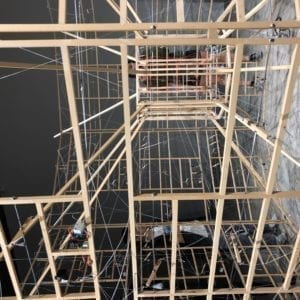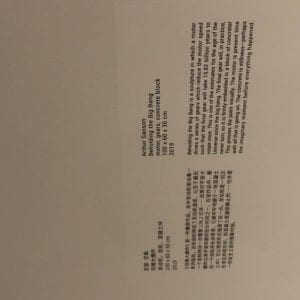- The visit to the Chronus exhibition was an enjoyable experience. The installations there are combinations of both art and technology. Compared to the traditional art forms, they used more electronic components, which make them more dynamic and modern. And most of them reflect on technology and science, which is also different. The one I liked most is Beholding the Big Bang. It’ll take 13.82 billion years for the last gear to rotate once, which is the estimated age of the Universe. This kind of exhibition leaves people a deeper impression compared to traditional exhibitions who normally only show images, as it can store and present complicated information in a simpler way with modern technology.

Rechender Raum by Ralf Baecker

- The first project I want to talk about is LATE SHIFT, an interactive film/adventure video game I once played. The play makes decisions throughout the game, and different decisions lead to different storylines accordingly. For me, there are two kinds of interactions inside the game. The player controls the protagonist to interact with other characters, during which he or she is also interacting with the game. It aligns with my definition of interaction in every way. The development of the storyline is changed depending on the player’s response, which will later lead to different endings. It’s a mutual process between the player and the game. Besides, the game is very interesting and the plot is overall well-made. This kind of game is a combination of game and film, both playable and of ornamental value.

The second project is ICEBERG, an interactive installation that tells the story of an iceberg. When people walk through the tunnel, the light will be turned on, and the music will be changed to show that human activity melts the iceberg. The idea of global warming and environmental protection that it tries to express is of great importance, and the lights and music of the installation are very beautiful as well. However, it is less successful in interaction. It only shows a low level of interaction by letting notes and light travel from end to end of the musical corridor, following the visitor. It tells the story and responds to the entry of the visitor, but the response might be a bit weak. It reminds me that the concept of the project should be creative and can relate to something that is of contemporary importance.
- During the group project, I defined interaction as a sort of cyclical and mutual process based on Crawford’s metaphor of conversation and the idea of “input, output, and processing” from Physical Computing. And I still stick to the definition.
In my opinion, to be a successful interactive experience, it should consist of three parts. First, it needs to be interactive, being able to respond to the “input,” but to be successful, it should respond in a more intellectual and complicated way, and make the user feel really engaged. Instead of only using image or sound, it can be a combination of both or even more forms of expression, providing the user with a multi-sensory experience. Second, the concept of the installation should have some meaning. It can be thought-provoking, telling people something that is of contemporary importance. Or it can be a game, bringing the user pleasure and entertainment. Third, the process of the interaction should be interesting, creative and visually pleasing as well. Both the way of interaction and the appearance should be well-designed.
Works Cited
Crawford, “What Exactly is Interactivity,” The Art of Interactive Design, pp. 1-5.
Igoe and O’Sullivan, “Introduction,” Physical Computing, pp. 1-4